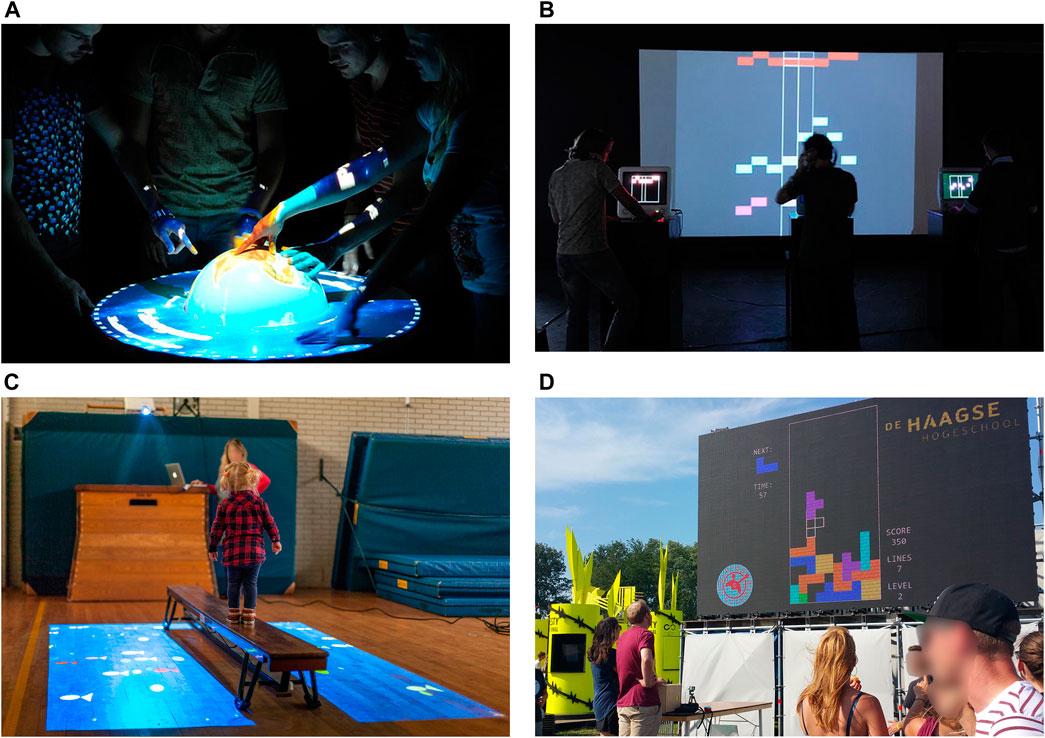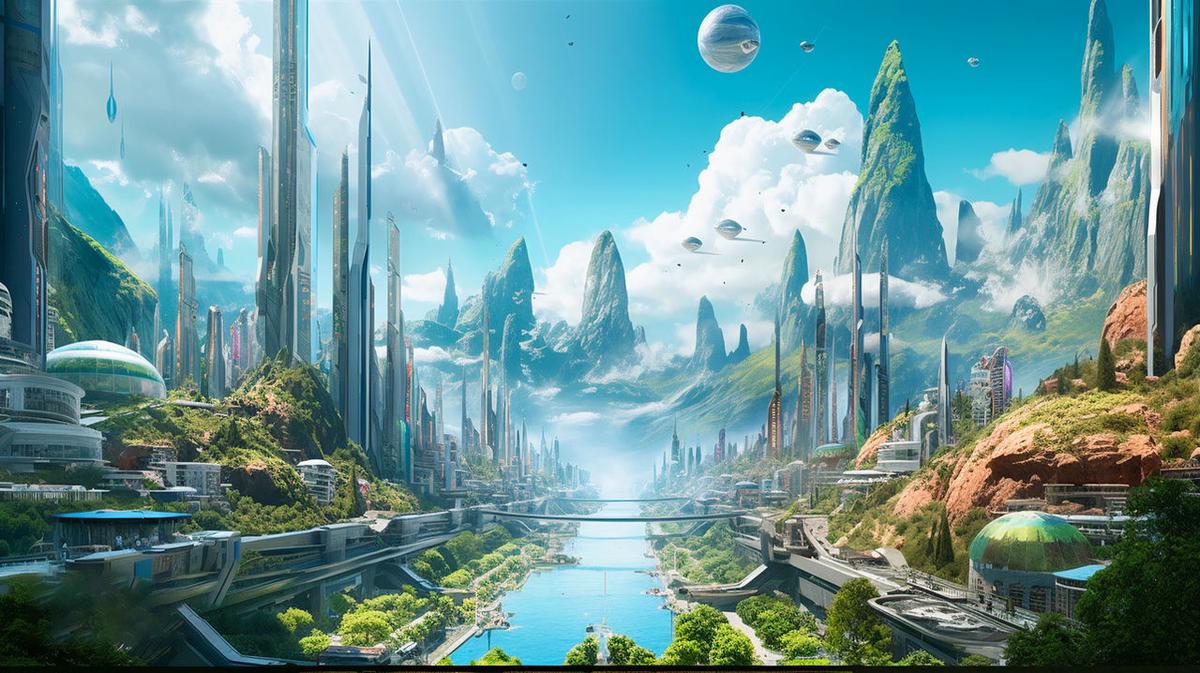Public art is undergoing a transformation with the integration of artificial intelligence, blending digital creativity with physical spaces. This new wave of AI-enhanced installations is changing how we experience and interact with art in our everyday environments.
Integration of AI in Public Art
AI-powered public art is transforming our landscapes into dynamic canvases. Atelier Sisu's balloon installation in London, where light, sound, and motion interact based on real-time data, exemplifies this new dimension of art enhanced by AI-driven tools like MidJourney, GANs, and image style algorithms.
Artists like Joshua Vermillion use AI to conceive architectural marvels, merging digital foresight with practical application. Generative Adversarial Networks (GANs) offer a unique approach, with two neural networks working together to refine and perfect visuals. The result is engaging, often lifelike artworks that can adjust their appearance based on environmental data or social trends.
Installations like Faces by Iregular utilize facial recognition to capture and morph images of passersby, creating a communal story that evolves in real-time. Intention by Louk Amidou responds to human gestures, showcasing how generative AI can create a tactile relationship between observers and their environment.
Interactive pieces like Deviation Game invite players to deceive an AI algorithm, blending participation with fun. These installations foster a playful city environment, inviting residents and tourists to engage with their surroundings in new ways.
However, this AI revolution raises questions about privacy and ethics. Finding a balance between engagement and consent in data use is crucial. By addressing these concerns, artists and technologists can craft installations that reflect our society's collective experiences while respecting individual rights and community values.
Impact on Artistic Expression
AI tools have opened up new avenues for creative exploration in public art. Computer-aided drawing tools and art chatbots are becoming essential parts of the artist's toolkit, offering intelligent suggestions and fostering a dynamic interplay between artist and machine.
Artists like Joshua Vermillion use MidJourney to pioneer innovative paths where AI collaborates and challenges traditional creative norms. His architectural concepts blend functionality with futuristic digital aesthetics, bringing a fresh perspective to public spaces.
Louk Amidou's Intention employs generative AI to create responsive installations, making the viewer an integral part of the creative expression. Rana Begum's "Dappled Light" installation combines optical phenomena with AI-driven processes, exploring the transient nature of perception.
GANs (Generative Adversarial Networks) are becoming central to the creative process, offering an evolving palette for artists to draw from. This leads to immersive artworks that adapt and respond to external stimuli such as environmental data or social media trends.
The integration of AI into artistic expression isn't without challenges. Artists must balance enhancing creativity with maintaining the human touch. Olafur Eliasson's "The Weather Project" demonstrated this balance, using AI-driven effects to create a communal experience that was both technologically sophisticated and deeply human.
Interactive AI installations like Tomo Kihara's Deviation Game introduce an element of play, transforming audiences into co-creators. This gaming-driven approach makes public art more engaging and participatory.
As artists continue to push boundaries, the convergence of AI and art promises an exciting future. The key lies in harnessing AI to support and expand the creative journey, enabling artists to explore new areas without overshadowing human expression.
Interactive AI Art Installations
Interactive AI art installations are reshaping public spaces into collaborative, dynamic environments. These works invite viewers to participate, influence, and co-create, shifting the role of the audience from passive recipient to active contributor.
Atelier Sisu's balloon installation in London blends light, sound, and motion, responding to environmental data and visitors' presence. This living canvas evolves in real-time, creating an immersive experience that changes with each visit.
Luke Jerram's "Museum of the Moon" merges lunar imagery with moonlight and ambient soundscapes. Using AI and interactive elements, the installation adapts to different venues, creating site-specific experiences that are both educational and emotive.
Tomo Kihara's "Deviation Game" challenges players to outsmart an AI algorithm through drawings. This playful installation prompts reflection on the evolving dynamics between humans and artificial intelligence while entertaining participants.
These installations represent a significant shift in how public art is conceptualized and experienced. They create a living, breathing dialogue between the artwork and the audience, challenging preconceptions about creativity and engagement.
However, the use of AI in interactive installations raises important questions about data privacy and consent. Designers must consider how to create engaging experiences that respect individual rights and community values.
By harnessing AI, artists are crafting experiences that evolve, engage, and enlighten. These forward-thinking installations not only reflect our collective creativity but also push us to imagine new possibilities for the future of public spaces and the role of art within them.

Ethical Considerations and Challenges
As AI-driven public art installations become more prevalent, ethical considerations take center stage. Privacy is a key concern, especially for works like Faces by Iregular that use facial recognition technology. Clear communication about data collection and strong privacy policies are essential to address these issues.
Data security is equally critical. Artists and technologists must collaborate to develop protocols that protect participant data while maintaining engagement. There's also the challenge of balancing AI's role with human creativity – AI should enhance rather than replace artistic expression.
The question of authorship arises when AI-generated artwork blurs the lines between human and machine input. Clear legal and ethical frameworks are needed to recognize and protect intellectual property rights.
AI may inadvertently perpetuate biases if it learns from skewed data sets. Artists and developers must work to mitigate these biases, ensuring public art remains inclusive and representative.
Responsible AI use in public art requires collaboration between artists, technologists, policymakers, and the public. Community involvement in developing AI-driven art projects can help ensure these installations are ethically sound and resonate with their audience.
Integrating AI in public art is a balancing act between innovation and responsibility. By addressing privacy, data security, and potential bias, we can create a future where AI enhances public art without compromising human values and creativity.
Future of AI in Public Art
The future of AI in public art promises exciting innovations that blend technology with human creativity. Imagine:
- Interactive installations that adapt in real-time to audience movement
- Sculptures that change form based on crowd mood detected through ambient noise or social media sentiment
- Environmental art that changes color based on air quality or generates alerts related to weather patterns
Personalization could revolutionize public engagement, with AI curating uniquely tailored experiences based on visitor preferences. This customization could elevate the experience from passive observation to active participation.
Projects like Kite and Alisha B. Wormsley's Cosmologyscape show how AI can be an inclusive tool, gathering community input to create digital art. This approach fosters a sense of ownership and belonging among diverse populations.
As AI evolves, it could facilitate adaptive public spaces that respond to social and cultural shifts. Installations might change to reflect current events or societal challenges, ensuring ongoing dialogue between art and public.
AI could also transform auditory environments, creating soundscapes that adapt to urban rhythms or synchronize with visual installations for multi-sensory experiences.
"We have no time to really think about how we want to live in this world, because we're always fighting against oppression," said Wormsley. "That really hit me as an artist, like, what spell can I put in the air to make it so that we know where we exist and that we're always going to exist? How can we dream a better way of existing?"
However, as we progress, we must approach AI integration thoughtfully. Safeguarding privacy, ensuring equitable access, and maintaining ethical standards will be crucial in blending AI and public art.
The future holds promise for creating spaces that are both intelligent and beautiful – spaces that resonate with our aspirations, reflect our diversity, and adapt to our changing world.

AI integration in public art is reshaping our shared spaces, creating dynamic and engaging experiences. By thoughtfully combining technology with artistic expression, we can craft installations that resonate deeply with audiences, reflecting the diverse nature of our society.





















